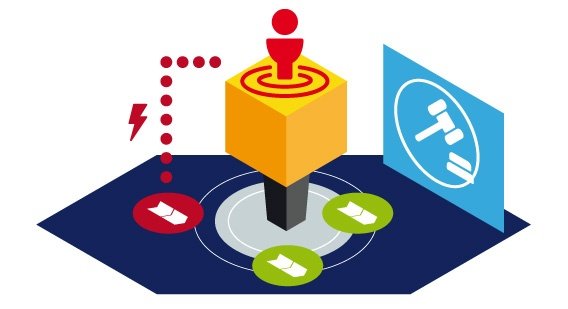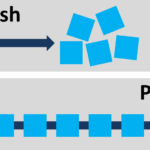Supply chain integration can be defined as a close calibration and collaboration within a supply chain, mostly with the application of shared management information systems. A supply chain is made from all parties that participate in the completion of a purchase, like the resources, raw materials, manufacturing of the product, shipping of completed products and facilitating services.
There are different levels of supply chain integration. We will understand this with the help of an example of a computer manufacturing company. The initial step in integration shall include choosing precise merchants to supply certain inputs and ensuring compliance for them for supplying certain amount of inputs within the year at a set cost.
This assures that the company has the appropriate materials required to produce the expected output of computers during the year. In the meanwhile, this computer company may sign a bond with a large supplier of circuit boards; the bond expects it to deliver a precise quantity at precise times within a year and fix a price that will be effective during the bond year.
If we move to a higher level, the next step would be to integrate the companies more closely. The circuit board supplier may construct a plant close to the assembly plant and may also share production software. Hence, the circuit board company would be able to see how many boards are required in the upcoming month and can construct them in time, as the company requires them in order to meet its sales demand.
Further higher level is referred as vertical integration. This level starts when the supply chain of a company is actually owned by the company itself. Here, a computer company may buy the circuit board company just to ensure a devoted supply of elements.
Push System
In a push-based supply chain, the goods are pushed with the help of a medium, from the source point, e.g., the production site, to the retailer, e.g., the destination site. The production level is set in accordance with the previous ordering patterns by the manufacturer.
A push-based supply chain is time consuming when it has to respond to fluctuations in demand, which can result in overstocking or bottlenecks and delays, unacceptable service levels and product obsolescence.
This system is based on the deliberation of customer’s demand. It tries to push as many products into the market as possible. As a result, the production is time consuming because the producer and the retailer struggle to react to the changes in the market. Forecast or prediction plays an important role in the push system.
Optimum level of products can be produced through long term prediction. This deliberative nature of the push system leads to high production cost, high inventory cost as well as high shipment cost due to the company’s desire to halt products at every stage.
Thus, in the push view of supply chain integration, the manager of a firm may sometimes fail to satisfy or cope with the fluctuating demand pattern. This system leads to high inventory and high size of batches.
Here, the companies focus more on minimizing the cost of supply chain and neglect the responsiveness. This system models challenges along with demand management and transportation management.
Pull System
The pull-based supply chain is based on demand-driven techniques; the procurement, production and distribution are demand-driven rather than predicting. This system doesn’t always follow the make-to-order production. For example, Toyota Motors Manufacturing produces products yet do not religiously produce to order. They follow the supermarket model.
According to this model, limited inventory is kept and piled up as it is consumed. Talking about Toyota, Kanban cards are used to hint at the requirement of piling up inventory.
In this system, the demand is real and the company responds to the customer demands. It assists the company in producing the exact amount of products demanded by the clients.
The major drawback in this system is that in case the demand exceeds than the amount of products manufactured, then the company fails to meet the customer demand, which in turn leads to loss of opportunity cost.
Basically in the pull system, the total time allotted for manufacturing of products is not sufficient. The production unit and distribution unit of the company rely on the demand. From this point of view, we can say that the company has a reactive supply chain.
Thus, it has less inventories as well as variability. It minimizes the lead time in the complete process. The biggest drawback in pull based supply chain integration is that it can’t minimize the price by ranking up the production and operations.


